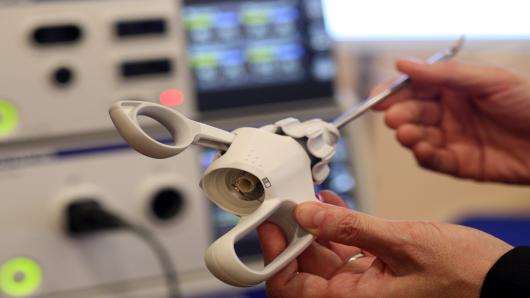What's in your endoscope?
A new study disturbingly discovered that an average of 15 percent of flexible endoscopes used to examine GI tracts and colons at five hospitals were harboring "bio-dirt"—cells and other material from previously examined patients. This was even after the instruments had been cleaned.
And that yucky finding is likely to be matched at other hospitals across the country, according to study author Marco Bommarito, Ph.d, lead research specialist at 3M's infection prevention division.
"It was surprising," Bommarito said of the number of dirty endoscopes researchers found in endoscopy suites at the hospitals, which volunteered for the survey and whose names were not released. "The expectation would be close to zero. When you start seeing one out of three, one out of four [instruments], failing this cleanliness standard, that's kind of striking," said Bommarito.
There are tens of millions of procedures using endoscopes in the U.S. each year, noted Bommarito, whose study is being presented this weekend at the 40th annual conference of the Association for Professionals in Infection Control and Epidemiology in Fort Lauderdale, Fla.
"During a day [a single] scope may be used on half a dozen to a dozen patients—maybe even more."
(Read More: Two-Thirds of Americans Don't Know If They Will Insure Under Obamacare)
The discovery of dirty endoscopes has previously led hospitals to issue alarming warnings to thousands of endoscopy patients that they should be tested for diseases such as HIV and hepatitis B and C.
About 10,000 patients who underwent endoscopies at three U.S. Veterans Affairs hospitals between 2003 and 2009 were warned four years ago that they might have been exposed to blood-borne pathogens from contaminated instruments. In 2010, the Palomar Medical Center in San Diego notified 3,400 patients that they could receive free tests for diseases after having had endoscopies with potentially dirty equipment.
Researchers for the study analyzed 275 flexible duodenoscopes, gastroscopes and colonoscopes. They found a cleanliness failure rate of 30 percent, 24 percent and 3 percents for each type of those endoscopes respectively.
"I expect this data set is large enough to be statistically representatives of the situation out there" in other US hospitals, Bommarito said.
The surprising level of dirty scopes discovered in the study could end up contributing to yet more reluctance on the part of people to undergo endoscopies, particularly a colonoscopy, in which the device is inserted through a person's anus.
Colon cancer is the second-leading cause of cancer-related deaths in the US. But the rate of examinations that can discover the disease, which include colonoscopies, has only been reported at about 60 percent in people over age 50, the population most likely to contract that cancer.
"If everyone aged 50 years or older had regular screening tests, at least 60 percent of deaths from this cancer could be avoided," a Centers for Disease Control fact sheet notes.
(Read More: States Eye California's Crack at Obamacare)
A guideline issued by the American Society of Gastroenterology said documented cases of infectious complications from endoscopic procedures were as rare as 1 in 1.8 million procedures.
But Bommarito thinks the actual number might be higher. He noted that it will not necessarily be obvious that a person's disease came from an unclean endoscope used on them.
Jeff Korek, a New York lawyer who specializes in medical malpractice claims, agreed with that point, noting that "absent self-reporting [by a hospital], I don't know how you would be able to prove" that a patient was infected by the equipment.
But if such a link were established, the hospital "could potentially be liable for whatever damages occurred as a result of the illness to the patient, which could involve economic and non-economic damage," said Korek, past president of the New York State Trial Lawyers Association.
The endoscopes were examined after undergoing the first phase of a widely accepted cleaning process following being used to look at patients' gastrointestinal tracts.
In the first phase, a manual cleaning is done with an enzymatic agent, and a technician then flushes the device. That first phase is meant to get rid of bio-dirt that can shelter potentially dangerous microorganism from the high-level disinfectant that is used to soak the endoscopes in the second cleaning phase, Bommarito said.
He said that if the scope isn't sufficiently cleaned during the first phase, the microorganism can survive the second phase—and remain in the device when used on future patients. "It's a dirty scope," he said.
(Read More: The End of the Endoscope)





